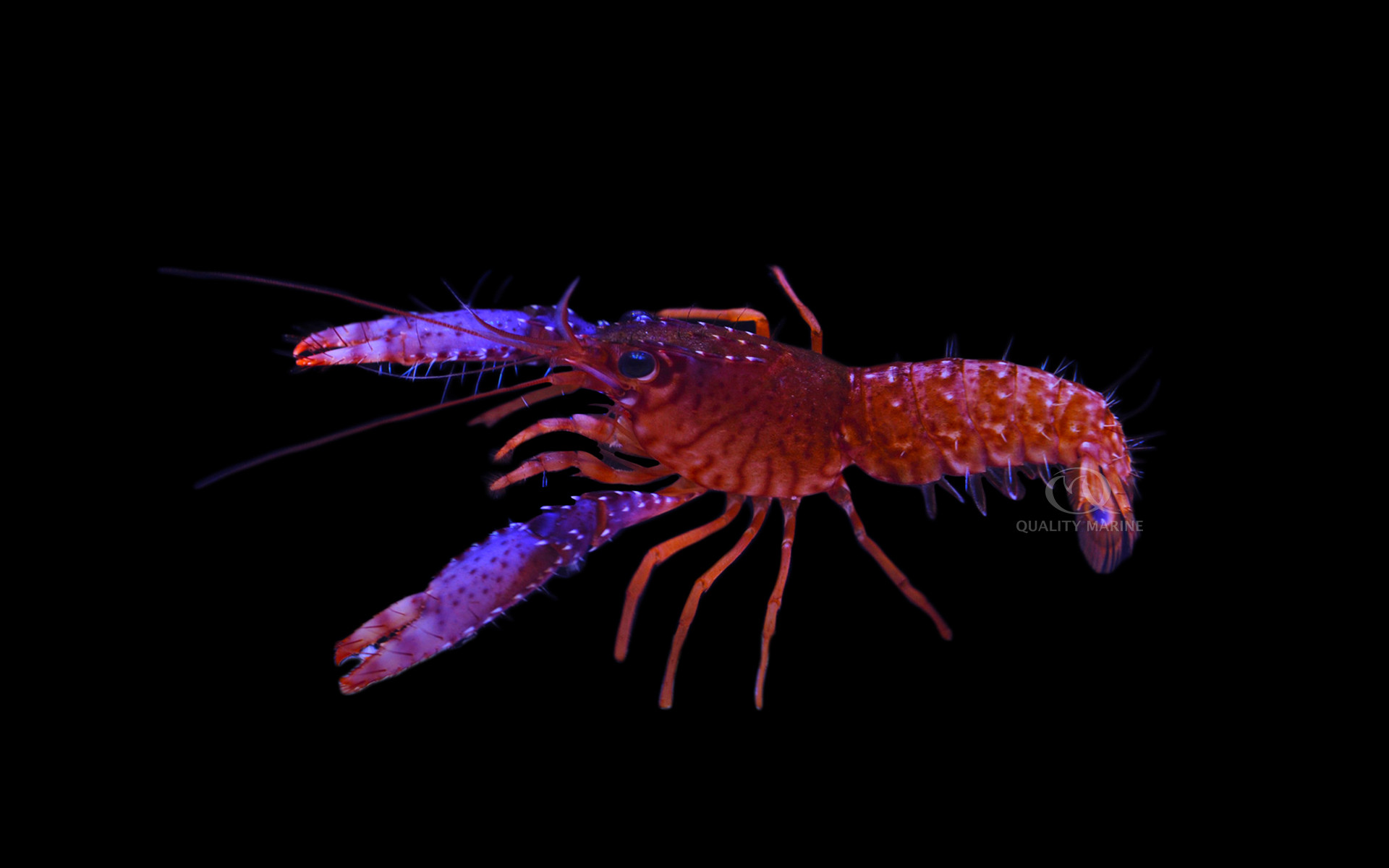The Care and Display of Spiny Rock Lobsters

Rock and spiny lobsters of the genus Panulirus arent generally recommended for the mixed reef/invertebrate or fish-only display (with some exceptions), but given a dedicated tank and proper care, these animals are quite worthy aquarium specimens that can make fun displays.
Over 20 different species belong to the genus Panulirus, and their distribution ranges quite widely. Species of this genus can be found in a wide array of climates, including but not limited to the tropical Pacific Oceans in Hawaii, temperate Pacific waters such as California, and even as far as the Atlantic subtropics in the Caribbean.
The main feature that differentiates Panulirus lobsters from other lobsters is the lack of the large claws (chelipeds) found in their cousins such as Homarus spp. and Astacoidea spp. Not to be outdone, Panulirus lobsters boast a large pair of walking legs in place of the missing claws. They also harbor a pair of antennas that are specialized for sensory perception to help them detect and adjust to their surroundings. These are normally kept alongside the body and extended only when in use.
Panulirus are in large part nocturnal, taking refuge in caves, crevices, and overhangs during the day and feeding and hunting during dusk, early morning, and nighttime hours. Though individuals can be found relatively close to each other at times, lobsters are generally intolerant of each other, excluding a very interesting, seemingly ceremonial gathering that occurs in an Atlantic species, P. argus.
As with most lobsters, rock lobsters are quite messy eaters and big waste makers. Since they are crustaceans, its necessary to keep dissolved organics to a minimum. Given their large size, eating methods, and waste production, a lobsters bioload on a system could easily rival that of any similarly sized or larger predatory fish, or one that has a high metabolism. The nutrient accumulation caused by these animals alone can cause the balance of smaller, unprepared systems to take a negative turn.
The member of the genus that casual aquarists are most likely to come across is the Blue Spiny Lobster.
Blue Spiny Lobster (P. versicolor) In our experience, they are much more predictable and agreeable than their cousins, especially as juveniles. For the most part, they are fairly timid and calmat smaller sizes, it is not unheard of to hear of them cohabiting in mixed reef tanks even with other lobsters, causing no harm. Though they are more timid than most lobsters, they can still be quite boisterous and destructive as adults, so my recommendation stands to keep this species and all spiny lobsters in dedicated aquaria. As it grows, the blue spiny lobster will begin feeding indiscriminately with a seemingly bottomless stomach. It should be fed various meats of marine origin. Blue spiny lobsters appreciate overhangs and caves in which to hide, though it is commonly seen burrowing pits into the substrate to take refuge. Overall, P. versicolor is quite hardy, has lots of personality, and in general is just a fun pet. As it adjusts to captive life, it can be coaxed into exploring its environment during daylight hours.
Now here comes the fun part. Once youve decided that spiny lobsters are just so neat that you cant live without them, its time to design an appropriate setup. These animals need quite large tanks, and surface area is of optimal importance. Generally speaking, an ideal setup would have the width of the tank being at least 1 times or, even better, twice the length of the animal. The length of the tank should also be at least 2 times the length of the specimen. Unlike many of the other animals we care for where surface area is a must, the height of the aquarium can be factored into usable area. Despite being clumsy, Panulirus are adept at climbing rocks, so sturdy overhangs can be used to create a stunning display. Caves, overhangs, and similar types of structures should be stabilized with some type of media, such as a PVC frame or epoxy. Any loose items or structures could be easily toppled, and you could possibly end up with a crushed lobster. Lobsters that have just molted are particularly sensitive and vulnerable, and sharp, protruding objects should be avoided at all costs.
For aesthetic reasons, we would design any potential hiding areas, caves, and overhangs to be viewable even when the animal thinks it is out of sight. With a design like this, you will be able to view the animal even when it is attempting to be reclusive. The goal is to allow the animal to feel secure but still be able to enjoy it.
It will obviously take quite dedicated aquarists to set up such an elaborate display for a single specimen, especially with such a myriad of choices in the marine aquarium trade. That said we are starting to see a trend away from the mainstream, where aquarists are more inclined to adore oddball creatures and set up biotope displays, which I think is a positive. It gives the hobby more inclusion, expanding options to new or bored aquarists. To each his own; maybe a spiny lobster just happens to fit your persona. Good luck to you, and possibly your future lobster.